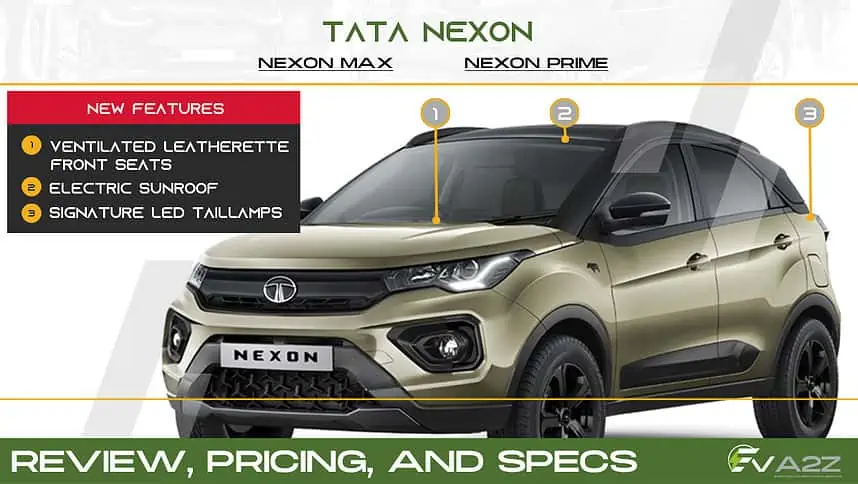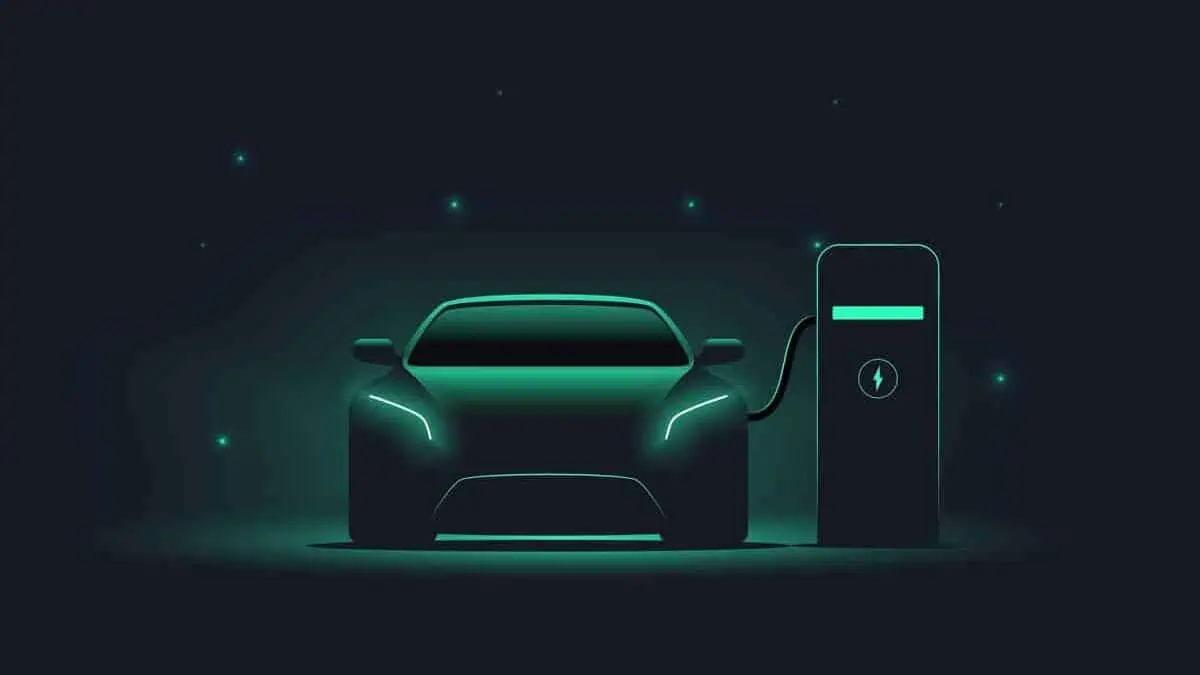1. Introduction
a. Briefly introduce the electric vehicle you’re reviewing
Indian legacy automaker Tata Motors’ Nexon.ev was the first to become a mainstream option among local customers, enabling it to advance as the country’s top-selling electric SUV.
It recently had a model update, including a redesigned interior and a new electric motor.
b. Explain the context or significance of the vehicle in the EV market
As mentioned, the Tata Nexon.ev is a mainstream electric vehicle choice in India. Its affordable pricing enables Indian customers to access more sustainable transportation.
It also significantly helped the country promote the shift to electric vehicles, considering its offered innovations and eco-friendly nature.
2. New Features in 2023
Tata.ev boasts that the new Nexon.ev now has a “stunning new design that commands attention.” These include intelligent digital features integrated into its exterior lights, steering wheel, signature DRLs, and X Factor. It also has new R16 alloy wheels.
In addition, it also now offers new safety features, including the 360 Surround View System and Blind Spot View Monitor.
3. Design and Aesthetics:
a. Exterior design and style
As cited in the new features, the 2023 Tata Nexon.ev now offers a new stunning design that steers attention. These include various intelligent digital features integrated into its exterior lights, signature DRLs, and X Factor.
It also has new R16 alloy wheels, full LED lighting, auto-headlamps and wipers. It offers seven body paint choices: Intensi Teal, Empowered Oxide, Fearless Purple, Creative Ocean, Daytona Grey, Flame Red, and Pristine White.
Below are the dimensions of the Nexon.ev:
| Length x Width x Height (mm) | 3994 x 1811 x 1616 |
| Wheelbase (mm) | 2498 |
| Unladen ground clearance (mm) | 205 |
| Boot space (Litre) | 350 |
b. Interior design and materials
The Tata Nexon.ev’s interior offers two enormous screens for cluster and infotainment. It has a contemporary digital dashboard that enhances the cabin experience, which includes a digital steering wheel, digital shifter, and physical control panel. Other features include ventilated seats, wireless charging, and 9-speaker JBL audio with sound stages.
It also has new textures and materials with two interior color options, including grey and off-white.
c. Build quality and fit and finish
The EV has an impressive quality owing to its combination of textures, colors, and patterns that deliver a wow factor.
It has available dual-tone dark grey and light grey upholstery. It features subtle blue stitching on the dashboard and seats.
d. Ergonomics and comfort
Tata can still improve the car’s ergonomics, such as the location of the USB and 12v socket or the armrest in the front. It apparently has no cupholders in the front. The charging ports are challenging to access as they are placed behind the gear knob.
Nonetheless, it enables a comfortable ride even while taking rough patches. However, it has slightly less interior space.
e. Cargo space and storage
The Tata Nexon.ev has 350 liters of boot space. Its rear seats are also completely foldable to haul more cargo.
However, there is no dedicated space for mobile phones and wireless charging dock. Its rear door pockets are also shallow, and the cramped footwell issue remains.
4. Performance and Driving Dynamics:
a. Powertrain and battery specifications
| Fuel Type | Electric(Battery) |
| Battery Capacity | 40.5 kWh |
| Motor Power | 106.4 kW |
| Motor Type | Permanent Magnet Synchronous |
| Max Power | 142.68bhp |
| Max Torque | 215Nm |
b. Acceleration and top speed
| Top speed | 150 km/h |
| Acceleration 0-100kmph | 8.9 Sec |
c. Handling and ride quality
The Nexon.ev has remarkable handling owing to its body control and grip around turns.
It also has a firm ride, particularly during lower speeds. However, that firmness makes driving on a rough surface feel tough. The becomes smoother as you go faster.
d. Braking performance
It also has competitive brakes, especially with the Long Range variant that features rear discs. Its suspension is well refined, enabling a less bumpy ride than its ICE counterpart.
e. Regenerative braking
| Smart Drive Features Smart regenerative braking | Multi-mode regenerative braking I 4 Levels (Level 0 – 1 – 2 – 3) 0 – No regen I 3 – Max. regen |
5. Range, Charging, and Efficiency:
a. EPA-estimated range and real-world range
| ARAI Range | 465 km |
| Real-world Range | 300+ km |
b. Charging options and infrastructure
| Charging Standard | CCS2 |
| Portable charging cable | Yes |
| Charging options | Home, 3.3 kW AC Wall Box, 7.2 kW AC Wall Box, DC Fast Charger |
| Charger Type Included | 3.3 kW AC Wall Box |
| Estimated regular charging time (SOC 10% to 100% from any 15A plug point) | 10.5* hours |
| Estimated regular charging time (SOC 10% to 100% from 7.2 kW AC fast charger) | 4.3* hours |
| Estimated fast charging time (SOC 10%-80%) from 50 kW DC fast charger | 56* minutes |
d. Energy consumption and efficiency
Tata Nexon.ev’s fully charged battery consumes about 30 units of electricity in eight hours. The LR variant has a 9.03 km/kWh efficiency and a 377 range in the city.
6. Infotainment and Connectivity:
a. Dashboard and instrument cluster
The 10.25″ instrument cluster offers various multi-dial view options, including One Dial, Two Dial, Digital, and Full Navigation. It also displays energy flow and charging status. Likewise, it also easily shows the car’s battery percentage and regen levels.
Meanwhile, the touchscreen is bigger at 12.3″ compared to the instrument cluster, efficiently supporting the 360-degree camera and blind spot monitor.
b. Infotainment system and features
It features HARMAN’s 31.24 cm Cinematic Touchscreen that supports the company’s “Arcade.ev” which allows drivers to download their needed apps like games, music, and streaming platforms. It also has Alexa voice assistance, multi-voice assistance, and automatic climate control.
It also supports Google Maps to aid owners in navigating their routes and available charging stations along the way.
c. Smartphone integration (Apple CarPlay, Android Auto)
The Nexon.ev supports both Apple CarPlay and Android Auto integration.
e. Over-the-air software updates
The EV also has an over-the-air (OTA) update capability.
7. Safety and Driver Assistance:
a. Driver assistance and safety systems (ADAS)
Tata’s Nexon.ev has advanced safety features, including the following:
- Anti-Lock Braking System
- Central Locking
- Child Safety Locks
- 6 Airbags
- Driver Airbag
- Passenger Airbag
- Side Airbag-Front
- Day & Night Rear View Mirror
- Curtain Airbag
- Electronic Brakeforce Distribution
- Seat Belt Warning
- Door Ajar Warning
- Traction Control
- Tyre Pressure Monitor
- Electronic Stability Control
- Rear Camera
- Anti-Theft Device
- Anti-Pinch Power Driver Windows
- Speed Alert
- Speed Sensing Auto Door Lock
- ISOFIX Child Seat Mounts
- Pretensioners & Force Limiter Seatbelts
- Hill Descent Control
- Hill Assist
- Impact Sensing Auto Door Unlock
- 360 View Camera
However, it misses out on ADAS features.
8. Reliability, Maintenance and Warranty:
a. Reliability and build quality concerns
The Tata Nexon.ev is developed with strong construction and steel body structure, ensuring its high-quality build and reliability.
Its ICE counterpart even gained a five-star rating from G-NCAP, which it can also boast as there are no structural changes in the Nexon EV.
b. Maintenance and service requirements
You can check Tata Nexon.ev’s maintenance and service requirements here.
c. Warranty coverage and options
| Battery Pack And Motor | 8 year/1,60,000 km (whichever is earlier) |
| Vehicle Warranty | 3 year/1,25,000 km (whichever is earlier) |
| Extended Vehicle Warranty | Up to 2 years |
d. Insurance costs and considerations
Tata Nexon EV’s insurance price in India depends on various factors like the Insurer/Insurance Company, Type of Policy, and Car Insurance Add-ons.
9. Comparison to Competitors:
a. Compare the reviewed EV to its key competitors in terms of range and pricing
| Model | Mahindra XUV400 | Nexon EV Max |
| Claimed Range | 456 kilometres | 453 kilometres |
| Real-world Range * | 289.5 kilometres | 293.3 kilometres |
| Price range | Rs 15.99 lakh to Rs 18.99 lakh | Rs 16.49 lakh to Rs 18.99 lakh |
b. Discuss the unique selling points and drawbacks of the reviewed EV compared to its competitors
The NEXON.ev has a higher real-world range than the Mahindra XUV400 at 293.3 km. However, the latter is more affordable at Rs 15.99 lakh (base price) than the Nexon’s Rs 16.49 lakh starting price.
10. Variants and Pricing:
a. List the available trim levels, options, and pricing
| Variants | Ex-showroom prices |
| Creative+ MR | Rs. 14.74 lakh |
| Fearless MR | Rs. 16.19 lakh |
| Fearless LR | Rs. 18.19 lakh |
| Fearless+ MR | Rs. 16.69 lakh |
| Fearless+ LR | Rs. 18.69 lakh |
| Fearless+ S MR | Rs. 17.19 lakh |
| Fearless+ S LR | Rs. 19.19 lakh |
| Empowered MR | Rs. 17.84 lakh |
| Empowered+ LR | Rs. 19.94 lakh |
b. Discuss the value proposition and whether the vehicle is worth the investment
The Nexon.ev is worth the investment because it is more affordable than other options in the EV market. It also offers advanced technologies and attractive exterior design.
11. Conclusion:
a. Summarize your overall impressions of the electric vehicle
Tata’s Nexon.ev is indeed an impressive model, especially after the revamp. It also has new smart drive features that significantly improve regenerative braking for more efficiency.
b. Provide a recommendation for potential buyers
Tata’s update in Nexon.ev’s design, technology, and powertrain made the model even more attractive. Customers who prefer an affordable but competitive electric SUV can check and consider Tata’s Nexon.ev.






